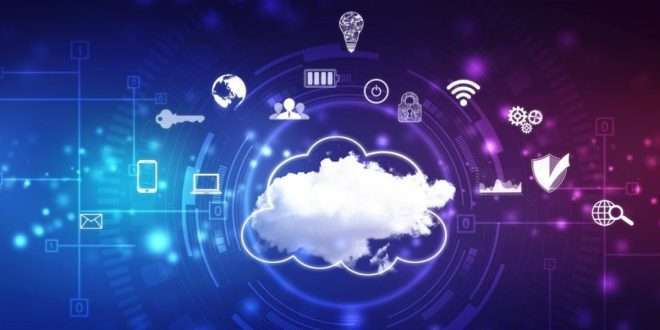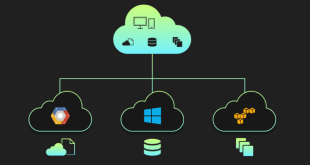The rise of hybrid cloud solutions has revolutionized the way businesses leverage cloud services. But as demands for real-time data processing and low-latency applications grow, the limitations of traditional centralized cloud infrastructures become evident. Enter edge computing, a paradigm that brings computation closer to the data source, enabling quicker responses and improved user experiences. In this blog, we delve into the world of edge computing in multi-cloud environments, exploring its transformative potential and how it advances cloud accessibility.
Understanding Edge Computing
Edge computing is a decentralized computing model that enables data processing at the edge of the network, closer to the data source or end-user device. By reducing the distance data travels and minimizing latency, edge computing significantly enhances application performance. It empowers businesses to process data in real-time, supporting critical applications such as IoT devices, autonomous vehicles, and immersive experiences.
The Synergy of Multi-Cloud Strategies
Multi-cloud strategies involve the use of multiple cloud service providers to distribute workloads and applications. The combination of edge computing and multi-cloud architectures opens up new possibilities for organizations. By strategically deploying workloads across different clouds and edge locations, businesses can achieve redundancy, fault tolerance, and flexibility, resulting in a more resilient and efficient infrastructure.
Advantages of Edge Computing in Multi-Cloud Environments
Reduced Latency
In latency-sensitive applications like real-time analytics and video streaming, every millisecond counts. Edge computing significantly reduces latency by processing data closer to the user, leading to faster response times and better user experiences.
Enhanced Security and Privacy
Edge computing minimizes data exposure by processing sensitive information locally instead of transmitting it to a centralized cloud. This approach strengthens data security and privacy, a crucial factor in today’s data-driven world.
Cost Optimization
Multi-cloud strategies allow organizations to choose cost-effective cloud solutions based on specific requirements. By combining edge computing with multi-cloud, businesses can optimize costs further by allocating workloads to the most suitable cloud providers.
Scalability and Flexibility
Edge computing enables seamless scalability as organizations can deploy edge nodes as needed to cater to changing demands. With multi-cloud strategies, businesses gain the flexibility to scale their infrastructure across various cloud providers, avoiding vendor lock-in.
Reliable Connectivity
Edge computing thrives even in environments with limited or intermittent connectivity. By processing critical data at the edge, applications remain functional even when network connectivity is temporarily disrupted.
Challenges and Mitigations
Data Synchronization
Managing data consistency and synchronization across multiple edge and cloud locations can be complex. Implementing robust synchronization mechanisms and adopting advanced data management tools can address this challenge.
Security Concerns
Decentralized edge computing raises concerns about securing edge devices and data. Employing strong encryption, access controls, and regular security audits can mitigate potential security risks.
Interoperability
Ensuring seamless interoperability between various cloud providers and edge devices is crucial for a smooth multi-cloud experience. Standardizing protocols and leveraging open-source solutions can facilitate interoperability.
Compliance and Governance
Adhering to data regulations and compliance standards across multiple jurisdictions demands careful planning and governance. Organizations must stay informed about relevant laws and implement compliance measures accordingly.
The Future of Edge Computing in Multi-Cloud Environments
The convergence of edge computing and multi-cloud is not just a passing trend; it represents the future of cloud computing. As the Internet of Things (IoT) and 5G technology continue to proliferate, edge computing’s significance will only grow, enabling more sophisticated applications and services.
Final Words
Edge computing integrated with multi-cloud strategies unlocks immense potential for businesses. By reducing latency, improving security, optimizing costs, and providing scalability, it advances cloud accessibility to unprecedented levels. As organizations embrace this transformative approach, they position themselves to thrive in a data-driven world, meeting user demands and staying competitive in the digital landscape.
Commonly Asked Questions
1. How does edge computing improve application performance?
Edge computing reduces latency by processing data closer to the user or data source, leading to faster response times and improved application performance.
2. Can edge computing enhance data security?
Yes, edge computing enhances data security by processing sensitive information locally, reducing data exposure and vulnerability to cyber threats.
3. How does multi-cloud complement edge computing?
Multi-cloud strategies distribute workloads across multiple cloud providers, complementing edge computing by adding redundancy, flexibility, and cost optimization.
4. What challenges does edge computing in multi-cloud environments face?
Challenges include data synchronization, security concerns, interoperability, and compliance with data regulations.
5. What does the future hold for edge computing in multi-cloud environments?
The convergence of edge computing and multi-cloud is the future of cloud computing, enabling more sophisticated applications and services as IoT and 5G technologies continue to evolve.
 webfily
webfily



